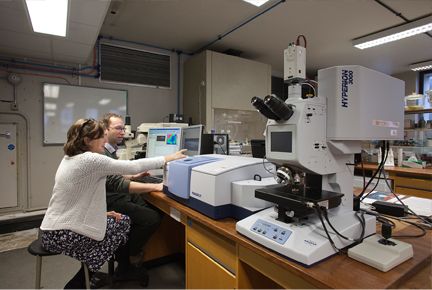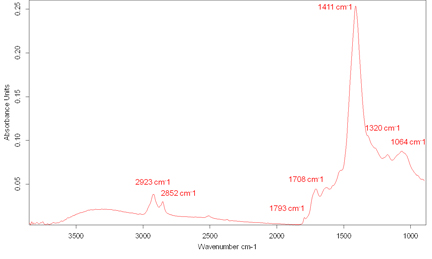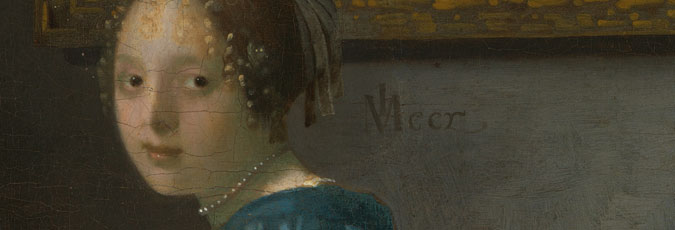ATR-FTIR
(Attenuated total reflectance) Fourier transform infrared microscopy (ATR FTIR-microscopy)
Infrared spectroscopy can be used to identify the different types of chemical components present in paint samples. A spectrum is obtained when a beam of infrared radiation containing wavelengths in the mid-infrared region (2500 nm–15,400 nm) interacts with the materials present in a sample of paint, providing information on their molecular structure. Different wavelengths are absorbed by molecules of different chemical classes, such as oils or resins, so the resulting spectrum has a pattern of absorption bands which is dependent on the type of material present.

The paint samples are very small and the infrared beam must be directed through a suitable microscope. This means that very small areas of the sample can be selected for analysis and information collected from specific paint layers, or even individual particles. Depending on how the sample has been prepared several different instrumental configurations can be used. Tiny fragments can be compressed between two diamond plates making them thin enough for the infrared beam to pass through and allowing the transmitted infrared radiation to be detected (transmission spectroscopy). A paint sample mounted as a cross-section is too thick for transmission spectroscopy, so a related technique called Attenuated total reflectance (ATR) spectroscopy is used to detect the infrared radiation reflected by the sample.
Infrared spectroscopy is usually employed to identify the organic materials present in paint samples, such as the paint binder or varnish, although some pigments can also be identified using this technique.


